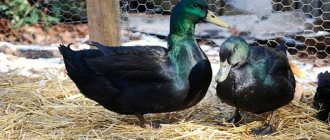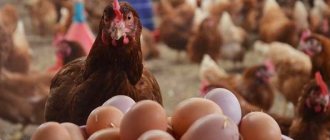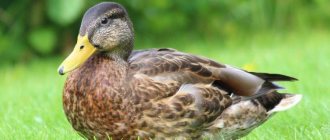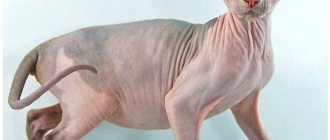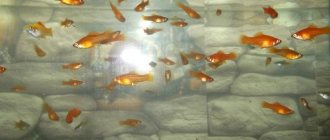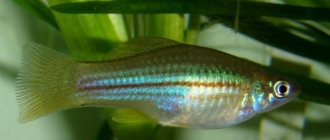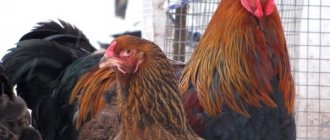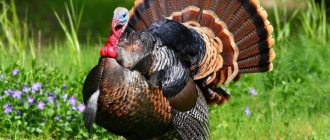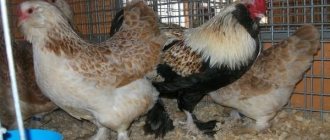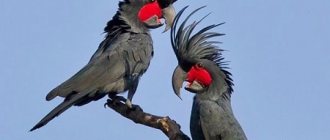- home
- Birds
- Description and lifestyle of the emu
The emu is a large, fast, but flightless bird. Its homeland is Australia, whose coat of arms depicts this animal. Belongs to the category of cassowaries. Lives everywhere on the continent, except in drought-resistant areas. During periods of prolonged rains, it migrates to the outskirts of cities. Back in the 18th century, there were 6 species of birds, but their merciless destruction led to the fact that now there are only 1 species and 3 subspecies, which differ depending on their territorial location.
The emu is a large, fast, but flightless bird.
Some breeds of ostriches are bred on farms, including:
- rhea;
- emu;
- African ostrich.
Farmers keep these birds on their farms for their valuable fat. Ostrich meat is red in color and tastes like veal and beef. It contains little fat but a lot of protein. Experts classify it as a dietary product. There are uses for claws, feathers, eyelashes, and unhatched eggs. Broken eggs take on a white color and are used to make souvenirs; costume jewelry is made from polished claws.
Farmers keep these birds on their farms for their valuable fat.
General impression
AppearanceFeatures of breeding and cultivationProductivity
The Australian emu is the second largest bird in the world.
The physique is large and powerful. The body is oblong in shape . The emu's plumage is more reminiscent of wool in its hair-like structure. The feathers on the body are thick and long, on the head they are short and curly. The color of the plumage is of different shades ranging from dark gray with a brown tint to gray-brown; The neck and head are darker than the rest of the body.
The head is small, the eyes are round brown-orange in color with long and fluffy eyelashes. Emus are distinguished by their acute vision: they are able to see a moving object at a distance of 100 meters . The beak is dark gray in color and flattened in shape. The neck is long and flexible.
Due to the structural features of its wings, the emu cannot fly . The wings reach up to 20 cm in length; at the tips there are growths resembling claws.
A distinctive feature of the emu is its powerful, strong legs, which are their weapon of defense. The bird's paws are three-fingered, with long sharp claws. Emus are excellent runners and can reach speeds of up to 50-60 km/h.
It is impossible to distinguish a female and a male by appearance; they are identical . The main difference is the characteristic guttural sound that the male makes during the mating season, calling for the female.
Ostrich chicks are born with a weight of about 500 g and a height of 12 cm. They have downy plumage, a spotted head, and a body with cream stripes. This color serves as camouflage from predators; it gradually disappears by 3 months. Babies are very active and gain weight quickly.
Emus have a fairly calm disposition, they are friendly and get along easily with people. But during the courtship period they can become unpredictable and dangerous.
Puberty of birds occurs at the age of 2 years, at the same time egg laying begins in females . In the natural environment, mating time (peak breeding) occurs at the beginning of winter - December-January, in captivity later - in the spring. After forming a pair and mating, the female can lay up to 10 eggs. The color of the eggs is dark blue or dark green.
After oviposition, the female leaves the nest, and the male does the incubation, driving away all predators and ill-wishers. Males leave the nest only to eat; the female replaces him and warms the nest. The brooding period lasts about two months, during which time the male eats and drinks little and loses up to 15 kg in weight.
The color of the eggs changes and becomes dark purple. The male emu raises, brings food and protects the offspring for up to 5-7 months.
In captivity, in order not to have many males, farmers prefer to hatch eggs in an incubator.
Under natural conditions, the survival rate of young animals is 50%; on farms the figures are much higher. The mortality rate in both adult emus and young animals is extremely low, since these birds have strong immunity and are resistant to many infectious and colds .
Fertility of female emus lasts approximately 20 years, during which time they lay eggs in fairly large quantities. The lifespan of emus in the natural environment is 15-20 years, but in captivity, birds can live up to 27 years.
Advantages:
- relatively calm, friendly temperament;
- stable immunity to many infectious and colds;
- unpretentiousness to climatic conditions;
- high life expectancy and fertility period;
- high productivity;
- wide application of products.
Flaws:
- a very curious bird;
- exposure to stress;
- the need for a large walking area;
- high price.
Australian emus are highly productive with minimal waste. Poultry is bred mainly for the purpose of obtaining eggs and meat, as well as for reproduction. One adult is capable of producing about 30 kg of meat, but the preferred age for slaughter is 15 months, at this age the net meat yield is 27 kg . Emu meat is red in color, tender in taste and reminiscent of veal. Meat is classified as a dietary low-calorie product; it is half as fatty as chicken meat. It contains a lot of protein and little cholesterol.
From one individual you can collect up to 2.5 kg of feathers . They are used in the fashion industry, used to decorate clothes and interiors. In fishing - for the manufacture of floats, in industry - for the manufacture of cleaning tools. Feathers can be collected throughout the bird's life, starting to be trimmed at 6 months of age.
From one ostrich you can get up to 2 square meters. m of leather. It is of high quality, used with other types of leather and used in the production of bags, belts, shoes, wallets, and clothing . Ostrich leather is also used as trim for airplanes, cars, and yachts.
One female per season can produce up to 50 eggs with an average weight of 700 g each. Compared to a chicken egg, an ostrich egg is 10-15 times larger. Ostrich eggs can be boiled, fried, or made into an omelet. The eggs range in color from dark blue to greenish blue and purple.
From one young individual you can get up to 7 kg of fat; it is widely used in medicine and cosmetology . Egg shells are also used - they are used in jewelry and interior decoration, and claws - they are used to make jewelry, and eyelashes - they are used in decorative cosmetics for the production of false eyelashes, as well as for the production of artistic brushes.
Kinds
The modern classification identifies three subspecies of Australian inhabitants:
- Woodward, living in the north of the mainland. Color pale gray;
- Rothschild, living in the southwestern region of Australia. Color dark brown;
- new Dutch ostriches living in the south-eastern part. The plumage is gray-black.
The ongoing confusion between emus and African ostriches continues due to superficial similarities. There are fundamental differences between them:
- in the length of the neck - the ostrich is half a meter longer;
- in the anatomical structure of the paws - emus with three fingers, ostriches with two;
- in the appearance of the eggs - in emu they are smaller and deep blue in color.
African ostrich and emu are different birds in Australia.
Content
On a Russian farm, you can keep an ostrich in one of three ways:
- Intensive in poultry houses.
- Extensive on pastures.
- Semi-intensive, which combines the first two methods.
The choice of method depends on local conditions. In harsh climates, it is better to use the third method, which will allow you to keep the birds indoors in winter and outside in the summer.
Emus easily adapt to temperature changes and feel comfortable at both + 40 °C and -20 °C . In winter, it is better not to keep them outside all the time: they require a room in which the temperature will be constantly maintained at least +15 °C. In summer, birds can be outside all the time, but they need a canopy under which they will hide from the weather.
The poultry house should be dry, bright, with good lighting, at least 3 m in height. It is built from materials that retain heat and prevent drafts - usually logs, bricks, cinder blocks . There should be at least 10 square meters per bird. m area. During the breeding season, the house should be divided into sections in which the families will live. Humidity in the room must be maintained at 40-60%. The bedding is best made of straw.
For comfortable walking, ostriches need a large area of 60 square meters. m per individual . The ostrich is an active and curious bird, so the walking area should be fenced. It is best to cover it with a high, shallow mesh fence placed on the foundation.
With the extensive method of keeping emus, the size of the pasture is about 8-10 individuals per 1 hectare of land.
After hatching, the chicks are placed in a pre-prepared room where the temperature is kept at +30 °C. Up to 3-4 months, young birds are kept separately from adult birds, then they are released for general walking.
Raising ostriches on Russian farms. Content Highlights
Read
Basic information about ostrich eggs. Hatching period, weight, nutritional value, methods of eating
More details
What types of ostriches are bred on Russian farms. Features of appearance, structure, productivity
Article
Signs of the most dangerous ostrich diseases
Read
Lifestyle and character
Emus are not migratory birds, but nomadic. The need to move around the always warm continent is due to the fact that Australia has dry seasons that can give way to floods. In addition, forest, brush and grass fires are common on this continent. However, the main reason for migrations is the search for food.
Like all inhabitants of hot climates, unable to see in the dark, emus prefer to lead a twilight lifestyle. During the day they wait out the heat in a secluded place, and early in the morning and in the evening they actively graze.
Moreover, during the day they do not sleep, but doze with their necks stretched upward. At night, emus indulge in full sleep, stretching their long neck along the ground.
These birds are predominantly solitary, sometimes form pairs, and can also move in small groups of 3-5 individuals.
Despite the fact that this bird formally has no enemies, it still lives in constant tension. It is difficult to say whether emus had enemies before Europeans arrived on the continent, but people have been living there for a long time. Hunting large birds has always been a good sport among the Australian Aborigines. The Europeans brought firearms and dogs with them.
Feeding
Ostrich feeders come in various shapes and types. They can be suspended or regular floor-mounted. Hanging feeders are placed at a level of 1-1.4 m from the ground. Drinkers are built with a length of at least 70 cm and a depth of at least 20 cm.
The birds are fed with combined feeds. There are no special feeds for ostriches, so feeds for broiler chickens are suitable . Small pebbles are added to the diet as additives for better digestion of food. To compensate for the lack of food of animal origin, ostriches are given waste from fish and meat production in the form of bone meal, as well as chicken eggs.
For the first few days after birth, chicks feed on reserves of the yolk of the egg from which they hatched. From the fifth day until the age of one month, the chicks are fed feed rich in protein, crushed clover, boiled eggs, and cottage cheese. From six months, young animals are gradually accustomed to adult food.
Approximate daily diet of a month-old emu chick:
| Product type | Quantity, g |
| Millet, bran, bread | 15, 20, 20 |
| Milk, cottage cheese, boiled eggs | 30, 10, 10 |
| Clover | 20 |
| Carrots, beets, onions | 20, 30, 5 |
| Meat and bone meal, fish meal | 5, 3 |
| Yeast, chalk | 5, 1 |
Adults “respect” green oats, alfalfa, cranberries, grain bread, peas, shells, and root vegetables. The daily portion of one emu ranges from 1.5 to 2.5 kg. The diet consists of approximately 50% succulent and roughage . The emu's diet in summer consists mainly of a mixture of grass and grain, and in winter - hay from grass mixtures with mineral supplements.
Approximate daily diet for an adult:
| Product type | Winter period, quantity, g | Summer period, quantity, g |
| Rye bread, bran, oatmeal | 200, 25, 200 | 400, 50, 150 |
| Oats, barley, cake, peas | 100, 50, – , – | 200, 100, 20, 50 |
| Meat or meat scraps, fish meal, bone meal, shells | 150, 25, 15, 15 | 100, 25, 20, 15 |
| Potatoes, carrots, beets, cabbage | – , 400, 50, – | 100, 300, 100, 200 |
| Grass, onions, hay meal | – , 20, 50 | 1000, 500, – |
| Yeast, fish oil, salt | 20, 10, 5 | 20, – , 5 |
Young animals need to be fed 4 times a day; adults need two meals a day. Clean water should always be freely available.
What do these birds eat?
In order to imagine the food supply of emu, just look at the diet of an ordinary domestic chicken. The diet of the large Australian bird includes:
- fruit;
- rhizomes, roots, roots;
- grass;
- leaves of trees and shrubs;
- seeds;
- small animals - arthropods, lizards, frogs, small snakes, etc.;
These birds drink water once or twice a day. This rhythm is developed by an organism that is constantly in arid conditions.
Incubation
There are special incubators for ostrich eggs. Eggs are incubated only horizontally. When hatching eggs, it should be taken into account that the relative humidity should be at the level of 32-44%; to maintain such indicators, air dehumidifiers are installed in the incubator. The eggs are heat sensitive and change color to turquoise.
If a farmer plans to breed ostriches for the purpose of selling eggs, then he needs an incubator, otherwise, the birds can be allowed to breed naturally.
Behavior
Emus are known to be very inquisitive animals. Seeing the movement of a limb or part of clothing, they immediately approach the person and begin to study. People also observed peculiar games of emus with each other. Sometimes they run up to another emu, poke it with their beak, then run away to the side and look at the emu's reaction. But still, emus spend most of their time cleaning their plumage with their beak.
Emu sleep is different from human sleep. They also calm down at sunset and go to bed at night. However, they can wake up to eight times a night to feed and relieve themselves. Before falling into deep sleep, the emu squats on its legs and enters a sleepy state. However, any visual or auditory stimulus is sufficient to return the animal to an awakened state. In general, the emu sleeps about seven hours every day.
In fact, emus can swim, but they rarely do this, only when really necessary.
The claws on the fingers are the most important defensive attribute of the emu. Emu can use their strong clawed feet as a defense mechanism. Their legs are practically the strongest in the animal kingdom, which allows them to even tear apart a metal wire fence.
Emus can make sounds such as grunting, hissing and even the sound of a drum. These calls can be heard up to 2 km. When creating a hum, the emu inflates a special bag located in the neck area. Hissing is characteristic of females, while grunting means alerting the male.
Diseases
Despite their strong immune system, emus are susceptible to the following diseases.
Bird flu
Symptoms : poor appetite, decreased productivity of females, gastrointestinal upset, increased body temperature, change in urine color to green, purulent discharge from the eyes.
Treatment is inappropriate . The sick individual is destroyed to prevent infection of other birds.
Prevention : vaccination, daily cleaning, absence of drafts.
Mycoplasma
Symptoms: serous nasal discharge, general weakness, difficulty breathing, cough, wheezing, lack of appetite, decreased egg production.
Treatment : the bird is treated with medications containing thylan.
Prevention : live vaccine “Nobilis Mg 6/85”, prevention of hypothermia and getting wet in birds.
Fungal gastritis
An infectious disease, as a result of which the walls of the stomach are affected by a fungus. It is impossible to cure a bird on your own; the help of a veterinarian is required .
Worms
Symptoms : loss of appetite, poor weight gain.
Treatment : if necessary, deworming is carried out.
Prevention : regular cleaning and disinfection of premises and equipment.
Enteritis
Symptoms : loose stools.
Treatment : carried out after consultation with a veterinarian.
Prevention : experimental vaccines are used to combat enteritis.
Bird pox
Symptoms : “warts” in the eye area, nodules on the mucous membranes of the mouth, nose and larynx.
Treatment : antibiotic therapy.
Prevention : timely vaccination.
- Parasites
- Infectious
- Other
Worms
Roundworms (helminths) that cause various diseases
Read
Aspergillosis
An infectious disease of chickens that affects the respiratory organs and leads to the death of the bird
Read
Necrotic enteritis
An acute disease that disrupts the microflora of the gastrointestinal tract
Read
Newcastle disease
What is it and how to avoid infection? Main characteristics of the disease
Read
Salmonellosis
Symptoms of acute and permanent forms of the disease, treatment and prevention
Read
Smallpox
Causes, symptoms of various forms, preventive measures and treatment methods
Read
Bird flu
Symptoms, diagnosis, prevention
Read
Pterophagy
What is the reason, why does it require urgent intervention and how to prevent the disease?
Read
LIFESTYLE
Outside the nesting season, emus stay in small groups. During dry periods they form flocks of thousands. Emus are nomadic birds. They travel vast distances in search of food. Emus are perfectly adapted for travel, so only during the nesting period, when males incubate the eggs, do they stay in one place for a long time. Having found a rich food source, they accumulate fat. Thanks to this, the bird, whose weight is 45 kg, survives in times of famine, when its weight decreases to 30 kg (males lose up to one-third of their weight during incubation).
Security measures
When working with emu, you need to move calmly, without sudden movements. For example, during the period of hatching eggs, males do not allow strangers near them and are very dangerous: with a kick they can cause irreparable harm to human health, even death. Therefore, when caring for such a bird, you should hold in your hand a branch or stick with a stiff brush at the end. Then the ostrich, protecting its eyes, will not risk attacking. If the ostrich begins to worry, then to calm it down, a hood is put on its head.
Frequent changes of workers, as well as a large number of visitors, are undesirable in order to avoid excitement and stress in the birds.
Visitors to the farm should remember that the ostrich is not a shy bird, but you should not approach it - it may even pinch you. Emus are very curious and love everything shiny: their attention can be attracted by earrings in their ears, a phone in their hands, so you should keep a distance when communicating.
Emu food
The main diet of the ostrich is plant foods, but the emu will not disdain to snack on small reptiles, for example, lizards, and also try an insect or small bird at breakfast.
The emu picks up food under its feet, but for some reason it does not want to pick leaves and fruits from the trees. The Emu swallows its food whole and then places small stones in its stomach on top of the food. The pebbles are used to grind food accumulated in the bird's stomach.
You can’t call an emu a water-drinker, because it can live without water for quite a long time, but it will not refuse to drink fresh water if it catches its eye.
INTERESTING FACTS, INFORMATION…
- The first Australian settlers used emu eggs to make an omelet. Several people could get enough of one egg. The yolk of an emu egg contains a lot of fat, so cooks typically poured the eggs out of their shells, left them overnight to cool, and skimmed off the fat the next day before frying them.
- Australians use the disrespectful expression “stupid as an emu.” The birds received the name “emu” for their piercing calling cry “um-uh”.
- 3,000 caterpillars were found in the stomach of one emu, shot during a punitive expedition.
- The emu is an incredibly interesting bird. There are many stories told about how he behaves while searching for food. One emu drank paint from a can, and then swallowed the can itself.
GENERAL PROVISIONS
There are fewer and fewer birds; on the island of Tasmania they were destroyed back in the 19th century.
The emu is a flightless bird. Its weight is 55 kg, height is 170 cm. It lives throughout Australia, they can be found in the steppes and semi-deserts. Nests are made on the ground from tightly packed grass. Here they lay 8-10 eggs, which are incubated by the father. They feed on fresh grass shoots, seeds, berries, and can also feast on locusts and grasshoppers. They often spoil the harvest by eating crops in the fields. Therefore, they are often hunted by farmers.
Natural enemies
The emu is a large bird and not easy to handle. But still she has enemies. These include predators such as eagles, hawks, and dingoes. Eggs and young animals are hunted by foxes, wild boars, and snakes.
The predator usually aims to hit the head or neck of the bird. But emus have learned to defend themselves well. When attacked by an enemy, they jump high, flap their vestigial wings and kick to deflect the attack.
In the last century, especially in the 1930s, large numbers of emus were destroyed by people, as the birds caused serious damage to crops. Rewards were even paid for killing an ostrich. A ban was then placed on the destruction of wild emus. Today, the population in the wild has stabilized.
Economic importance of the animal
The emu is an endemic species to Australia. The indigenous aborigines and the first settlers used the meat of this bird for food. Emu fat was of particular value. It was rubbed into the skin, used to make paints, used to fuel lamps, and even treated some diseases.
In the late 80s of the last century, the first farms for commercial emu breeding appeared in Australia. Today, Australian ostriches are grown on other continents: North America, South America, Eurasia.
Emu meat is considered a dietary product, as it contains a low percentage of fat and a large amount of beneficial microelements. Emu oil is used in the cosmetic and medicinal industries. Leather, feathers and egg shells are used to make shoes and accessories.
Breeding Features
Having your own ostrich farm, it is much more profitable to breed chicks on your own rather than buy them from other breeders. All you need for this is sexually mature individuals and an incubator.
Mating season
When mating season arrives, males become aggressive
Caution should be exercised when interacting with birds. To calm the male, they use a 2-meter hook, which is used to press him to the ground in order to disorient him. If it doesn’t help, put a bag with a hole for the beak on your head.
If it doesn’t help, they put a bag on the head with a hole for the beak.
Oviposition
There are 2-4 females per male. The mating season, starting in May, continues until autumn. Ostriches lay one egg every 2-4 days. The quality of eggs is higher, if the male is older than the female, hatchability rates increase.
Hatching time
In nature, ostriches hatch eggs for 41-46 days. Moreover, both parents sit on them in turns. On farms, eggs are hatched in incubators. African ostriches hatch at 39-41 days, emus at 52-56 days. The female can hatch 15-20 chicks per season. But usually, farmers use incubators to introduce young animals.
Is incubation necessary?
Ostrich eggs are not cheap, and each successfully hatched one will bring a new ostrich to the farm. To speed up the process of hatching chicks and minimize their pathologies, incubation is used. The chicks obtained by incubation methods are strong, healthy and growing well.
